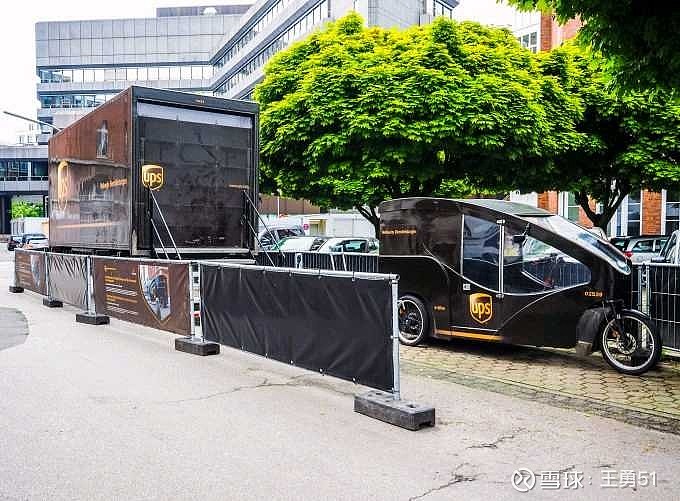Unsurprisingly, large shippers again find themselves on the receiving end of hefty surcharges from one of the large integrators as they prepare for peak season.
UPS has unveiled several tariffs squarely aimed at shippers with high parcel volumes and outsize shipments.
This latest round of surcharges affects customers that have shipped over 25,000 packages during any week since February 2020 – before the pandemic impacted traffic in the US.
How much more the firms will have to fork out hinges on the number of parcels they send out on average per week in the coming peak season: if their traffic is over 500% of their February 2020 levels, they face as much as $6.15 more per package.
不出所料,大型托运人在为旺季做准备时,再次发现自己受到了其中一家大型集成商的高额附加费。
UPS已经公布了几项针对包裹量大、出货量大的托运人的关税。
这一最新一轮的附加费影响到自2020年2月以来任何一周内运送25000多个包裹的客户,而这一周正是流感大流行影响美国交通之前。
在即将到来的旺季,这些公司每周平均发送包裹的数量决定了他们将要付出多少代价:如果他们的流量超过2020年2月水平的500%,他们将面临每包高达6.15美元的额外费用。
Those charges are set to come into effect on 31 October, but clients with outsized shipments are in for two rounds of surcharges. If a shipment requires additional handling, the surcharge rises to $3.50 on 4 July and on to $6 on 3 October.
The surcharge on shipments in excess of 96 inches in length or 130 inches in girth climbs, on 4 July, by $8.55 to $40 and on to $60 on 3 October. Shipments beyond the integrator’s maximum limits will be hit with a $250 surcharge per package from 3 October.
And John Haber, CEO of parcel shipping consultancy Spend Management Experts, does’t think these increases, although hefty, shocked any shippers, given previous rounds of rate increases and higher surcharges. But he and others question the extent, as well as the timing, of higher parcel charges.
Some observers have argued that the rises are well in excess of the increased costs to cope with the elevated volumes in their networks that UPS and FedEx have cited, given their elevated margins. Mr Haber also takes issue with the designation of the latest increases as “peak surcharges”.
“Some of the increase starts on 4 July – whose peak season is that? Certainly not sellers’,” he said.
And peak surcharges have been in place for over a year already, he added, “they never stop”.
Essentially, the integrators have moved to dynamic pricing, Mr Haber argued, where charges are modified frequently and customers are advised to check regularly for pricing updates.
He believes FedEx and UPS are controlling capacity and seeking to raise the share of their parcel business tendered by small and mid-sized shippers, as these generate higher margins, thanks to these clients’ inability to leverage volumes for discounts.
“It’s supply and demand, and in UPS’s case you’ve got a financial wizard in charge looking to boost shareholder return,” said Mr Haber.
The integrators can raise charges more or less at will, because they have no cause for fear that their networks might not be full in the coming peak, Mr Haber added. According to one estimate, FedEx, UPS and the US Postal Service account for more than 90% of US parcel volumes.
Shippers have been trying to find alternatives: many are looking to regional parcel carriers, like LaserShip and Lone Star Overnight, that have recently expanded their reach, but they do not have the infrastructure to add large volumes to their operations at this point, according to Mr Haber.
“Retailers are trying to forecast their shipping costs, but pricing is constantly changing, and not for the better,” he said.
这些费用将于10月31日生效,但装运量过大的客户将面临两轮附加费。如果货物需要额外处理,附加费在7月4日升至3.50美元,10月3日升至6美元。
长度超过96英寸或周长超过130英寸的货物的附加费在7月4日上升8.55美元至40美元,10月3日上升至60美元。从10月3日起,超过集成商最高限额的货物将受到每包250美元的附加费的影响。
包裹运输咨询公司支出管理专家的首席执行官约翰•哈伯(johnhaber)认为,考虑到前几轮的运价上涨和更高的附加费,这些增长虽然巨大,但并没有让任何托运人感到震惊。但他和其他人对提高包裹收费的程度和时间提出了质疑。
一些观察家认为,由于利润率上升,这些增长远远超过了为应对UPS和FedEx所列举的网络业务量上升而增加的成本。哈伯还对将最新增加的费用称为“最高附加费”表示异议。
“部分增长从7月4日开始——这是谁的旺季?当然不是卖家的,”他说。
他补充说,最高附加费已经实施了一年多,“他们从未停止”。
哈伯认为,从本质上讲,集成商已经转向了动态定价,即经常修改收费标准,并建议客户定期查看价格更新。
他认为,联邦快递(FedEx)和联合包裹公司(UPS)正在控制运力,并寻求提高中小型托运人投标包裹业务的份额,因为由于这些客户无法利用运量获得折扣,这些业务产生了更高的利润率。
哈伯表示:“这是供求关系,就UPS而言,你有一个金融奇才负责,希望提高股东回报率。”。
哈伯补充称,这些集成商可以随意或多或少地提高收费,因为他们没有理由担心自己的网络在即将到来的高峰时期可能不会满负荷。据估计,联邦快递、UPS和美国邮政服务占美国包裹总量的90%以上。
哈伯表示,托运人一直在努力寻找替代方案:许多公司都在寻找区域性包裹运输公司,如LaserShip和Lone Star Nighlight,这些公司最近扩大了业务范围,但它们目前还没有基础设施为业务增加大量业务。
他说:“零售商正试图预测他们的运输成本,但价格却在不断变化,而且并不是向好的方向发展。”。
The integrators are not invulnerable, though. FedEx recently had to row back after its LTL arm, FedEx Freight, abruptly notified some 1,400 customers it was stopping pick-up of their traffic from the following business day. According to reports, some affected firms were suppliers to large FedEx customers on the parcel side, who were not pleased with this development, which forced FedEx Freight to resume business with those companies.
For the most part, though, shippers that had been cut off found themselves out in the cold.
不过,集成商并非无懈可击。联邦快递(FedEx)的LTL子公司FedEx Freight突然通知约1400名客户,从第二个工作日起停止提货,联邦快递(FedEx)最近不得不做出让步。据报道,一些受影响的公司是包裹方面联邦快递大客户的供应商,他们对这一发展不满意,迫使联邦快递货运公司恢复与这些公司的业务。
不过,在很大程度上,被切断的托运人发现自己身处寒冷之中。
$中远海控(SH601919)$
